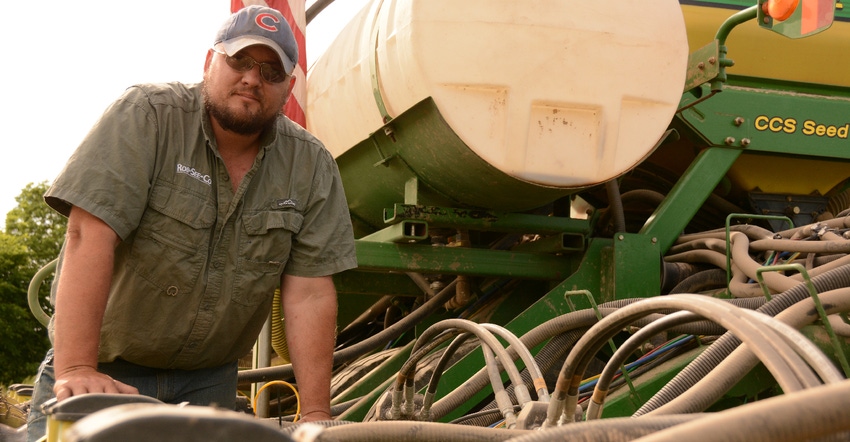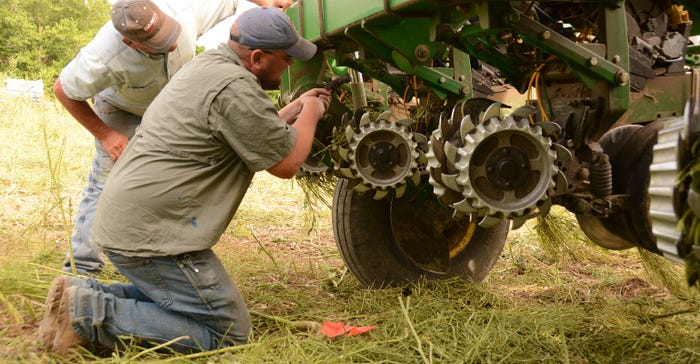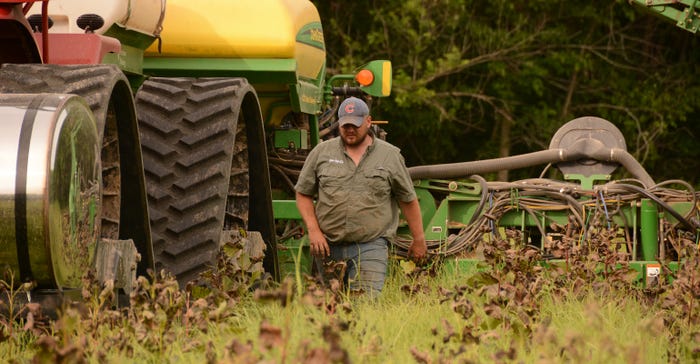
Matt Swanson is a winner. Or at least, he was in 2019.
That was the year he won first place in the National Corn Yield Contest, topping out the no-till nonirrigated class with 330.43 bushels per acre on his LaHarpe, Ill., farm.
But the tables turned in 2020. Swanson’s yields weren’t even good enough to bother entering. After ideal planting conditions in late May, he didn’t get rain until July. Plants were stunted until that July rain pushed them into the nutrient band. But it was too late.
So does that mean he failed? No — and definitely not when he’s learning from it.
Swanson is one of hundreds of farmers who enter the National Corn Growers Association yield contest each year, where winners are the toast of AgTwitter, feted with press and accolades, and flown around the country to speak on behalf of their chosen seed, chemical and fertility programs.
NCGA has run the contest for more than 50 years, but plenty of folks still question whether it has merit. If the farmers who win do so by pouring nutrients and dollars into a small plot — at a rate not feasible on a large scale — maybe a profit contest would make more sense?
It’s a point well-taken for Swanson, who says there are two kinds of farmers who enter the yield contests. First, there are the ones who want to win and spend a lot of money “pouring the coal” to their plot. Sometimes it works, but sometimes it doesn’t.
“I’ve fallen into that category in the past,” Swanson admits, having entered in 2017, ’18 and ’19, and winning at the state level in 2018 and ’19.
The second kind likes to throw things against the wall and see what sticks. Experiment. Learn. Find four to five things that work every year and apply those to the operation. That’s the kind of farmer Swanson wants to be.
“Then you stop guessing and really start making money,” he says.
What he’s tried
Swanson, who farms with his dad and cousin right up to the Mississippi River, first entered the NCGA contest in 2017. He placed third in the state in the no-till nonirrigated category that year, placed first in the state in 2018, and then won the category nationwide in 2019. He says he entered to get a real comparison to everyone else.
“On Twitter or at the coffee shop, people can say their corn made 300 bushels, but you never really know. This way, everybody theoretically plays by the same rules,” he says.

Swanson is 100% no-till, often planting green into standing cover crops. He’s had success delaying planting until May and early June, overcoming no-till’s long-standing challenges with cold, wet soil conditions early in the season. That didn’t pan out as well in 2020, and he believes the delayed rain meant plants couldn’t get to nutrients, affecting ear shanks — and ultimately, their ability to fill an ear well.
How does he know the problem wasn’t late planting or planting green? Data, he says. He could compare his plots to other fields planted in similar time frames and conditions.
By nature, Swanson is a measured risk taker. He likes to try different products on 10 acres here and there, but not get crazy and make a change across all his acreage.
“You have to have those acres where you throw money at it, just to see what happens,” he says. “You’ll learn things you didn’t know to ask about.”

Swanson has made friends in the high-yield community, and he often reaches out for advice, collecting a handful of tips and information that, when he puts it all together, can make a big difference. This year, the focus is soil chemistry — and in particular, potassium.
He runs standard soil tests and availability tests, and he’s learned that potassium can show up in the soil but not be available. Availability actually went down where he broadcast dry fertilizer in the fall. That confirmed his suspicion: Dry broadcast fertilizer wasn’t working right for them.
“The question is, why not? If it brings the soil test up but doesn’t become more available for the plant, there’s no reason to apply it,” Swanson says. “We all put on tons of dry potash every year. Is it really available?”
He can’t explain the chemistry yet but believes it shows “we need to change how we’re farming.”
What he’s learned
Thanks to his trials, Swanson does a lot less guesswork, and targets fertilizer application based on what the crop needs to grow — not just replacing what the crop removed.
“I think we’re getting better at predicting when we’ll hit yield-limiting factors; then we pull back,” he says. “But to make it work, you have to quantify what the soil will contribute.” And that’s tough to measure.

Swanson’s current fertility strategy is to make an in-furrow pass at planting that includes a humic acid (he uses Monty’s liquid carbon), a sugar source (MMTS from Missouri-based Teva), zinc, manganese, a plant growth regulator (Nutrien’s Radiate), a 3-18-18 pop-up fertilizer and a generic rootworm insecticide. His in-furrow application also includes Precision Planting’s Conceal as a 2x2x2.
He makes two sidedress passes with 360 Yield Center’s Y-Drop. Included in the mix are a 9-24-3 fertilizer, 28% UAN, potassium thiosulfate (or KTS), Monty’s liquid carbon, Teva’s MMTS, chelated liquid calcium and boron. The concentration of each product varies for each sidedress pass.
“Some years we learn a ton, and some years we confirm what we already knew,” he says.
But has he made money?
It’s easy to read that list of nutrients and wonder how Swanson makes any money. He insists he does. Here’s how:
At 330 bushels per acre and $4 a bushel, that’s $1,320 per acre. Subtract $396 for land costs, $75 for equipment, $62 for seed, $52 for crop protection (non-GMO seed and generics they apply themselves), $250 for fertilizer, $25 for crop insurance, $20 for fuel (they’re all no-till: planter pass, four sprayer passes, combine and cart), $20 for trucking and $100 in labor for himself.
That means he’s got $900 per acre invested in that crop before labor, but he’s still netting $320 per acre.
“Of all the high-yield stuff that bothers me, that’s the one that drives me crazy,” Swanson says. “People say yield winners aren’t making money, and it’s just not true. No, you can’t buy SmartStax and pay the co-op to apply everything and still make money. But that’s not how I’m doing it.”
Note that $900 investment is not on all of his acres.
“I don’t have the guts to do it on 100%,” he says. “That’s expensive.”
Still, Swanson knows if he wants to be successful in the midst of other farm operations with more acres or better capitalization, he has to think differently. And he has to succeed in different ways.

Swanson laughs and says on the Enneagram personality assessment, he’s a 4, which means he’s rarely content. He makes little changes and isn’t opposed to the next step.
“I don’t want my operation to fail because I didn’t do enough,” Swanson says.
And in the end, that may make him more of a winner than any contest.
NCGA’s 2020 yield winners
When the National Corn Growers Association launched its National Corn Yield Contest in 1965, there were 20 entries from three states, and the highest yield was 218.9 bushels per acre. Today, the contest has nine categories and recognizes 27 national winners. And yields? In 2020, those 27 winners averaged over 345.99 bushels.
Twelve Illinois entries exceeded 300 bushels. For comparison, national yields in 2020 averaged 175 bushels. Here’s a look at the Illinois winners:
Conventional nonirrigated: Troy Uphoff, Findlay, placed first in Illinois and third nationwide with 323.8 bushels.
No-till irrigated: Dan Luepkes, Chana, placed first in Illinois and third nationwide with 310.5 bushels.
No-till nonirrigated: Melissa Yocum, Oregon, placed first in Illinois with 307.3 bushels.
Strip till/minimum till irrigated: Melissa Yocum, Oregon, placed first in Illinois with 299.5 bushels.
Strip till/minimum till nonirrigated: Braden Lee Short, Norris City, placed first in Illinois with 321.7 bushels.
Conventional irrigated: Phillip Friedrich, Green Valley, placed first in Illinois with 306.1 bushels.
About the Author(s)
You May Also Like






